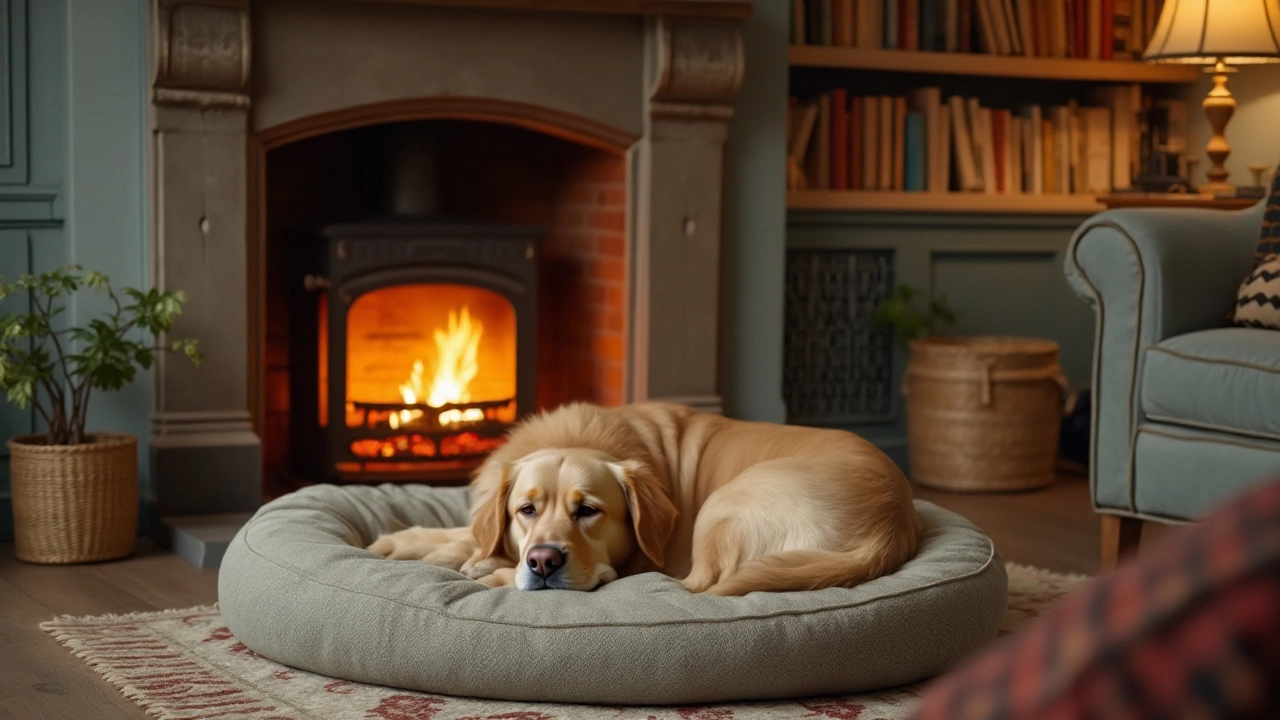Dog Sleeping Area: Simple Tips for a Cozy, Safe Space
Every dog loves a spot where they can curl up and feel secure. Whether you have a big Labrador or a tiny terrier, setting up a good sleeping area doesn’t have to be complicated. In this guide you’ll get quick, practical ideas that work for any home.
Choosing the Right Bed and Blanket
Start with a bed that matches your dog’s size and sleep style. If your pup rolls over a lot, a low‑profile mattress works best. For dogs that like to dig, a deeper pillow with raised edges gives a den‑like feel. Add a soft, washable blanket on top – it adds warmth and makes cleaning easy.
When picking a blanket, look for something that’s machine‑washable and thick enough to trap heat but not so heavy it drags the dog around. A fleece throw or a cotton quilt are solid choices. If your dog tends to chew, choose a blanket with reinforced stitching or a chew‑resistant fabric.
Setting Up the Crate and Nighttime Routine
Crates can double as sleeping spots, especially for puppies or dogs that feel safer in a confined space. Place the crate in a quiet corner, away from drafts but close enough to hear family activity. Cover the top half with a light blanket to create a dark, den‑like environment, just like a pup’s mother would provide.
Don’t forget a small water bowl nearby – even overnight some dogs will sip. If the crate feels too bare, slip a familiar toy or a piece of your clothing inside. The scent will calm them and make the space feel personal.
Keep the bedtime routine consistent. A short walk, a bathroom break, and a few minutes of petting signal it’s time to settle down. Consistency trains the brain to associate those actions with sleep, so your dog will start winding down on its own.
If you notice your dog tossing and turning, try adjusting the temperature. Most dogs prefer a room that’s around 68‑72°F (20‑22°C). A floor mat can keep them warm in colder months, while a fan can help on hot summer nights.
Watch for signs of discomfort. Scratching, whining, or trying to escape the area usually means the bed is too hard, too soft, or the space is too small. Small tweaks – a softer pad or a bigger crate – can solve the problem fast.
Finally, rotate the bedding every few weeks. Fresh smells keep the area inviting and help prevent odors from building up. A quick rinse and a tumble dry, and you’re ready for the next week of sweet dreams.
With these simple steps, you’ll turn any corner of your home into a dog sleeping area that’s both cozy and safe. Your pup will thank you with a wagging tail and a good night’s rest.
- Morgan Ainsworth
- 0 Comments
Best Spots to Place Your Dog's Bed for Maximum Comfort
Finding the right spot for your dog's bed is essential for their comfort and well-being. The best locations offer a balance between your pet's need for a comfortable rest and their desire to be involved in family life. Consider factors like temperature, noise, and accessibility when deciding on a place for their bed. Learn how different locations can influence your dog's daily routine and how to choose the best one for them. We'll explore ideal spots that keep your furry friend happy and healthy.
View More
